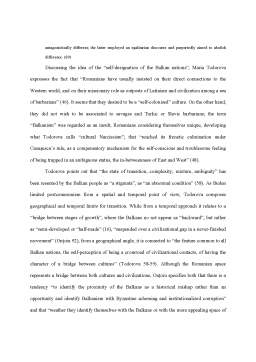Extras din referat
The term of “subaltern” is used in order to define something of low rank, subordinate. It refers to a position in a certain hierarchy that is not the first. While some consider that the relation of subalternity is “about power, who has it and who doesn’t, who is gaining and who is losing it” (Beverly 1), it has been Leon de Kock that pointed out the fact that there is a too-broad use of the term as “subaltern is not just a classy word for <<oppressed>>, for Other, for somebody who’s not getting a piece of the pie” (45). He believes that “everything that has limited or no access to the cultural imperialism is subaltern” and that the notion designates “a space of difference” (45). First used by Antonio Gramsci in a manuscript written in prison and deployed to pass the rigors of censorship, from a postcolonial perspective, “subaltern” refers to the social group that from a geographical, social and political point of view are outside the structure of the hegemony power exercised by the colonists. Subalternity relationships occur in the context of colonialism and can be defined in close connection to the term of “imperialism” that refers to the formation of an empire that tends to impose its dominancy over one or more neighboring countries.
Patapievici believes that for Romanians, “historical accidents” play an important role and he identifies five main periods of “darkness” in its evolution: the first one is represented by the Roman invasion of Dacia and the withdrawal of the troupes, the second corresponds to the destruction of the neighbors by nomadic tribes, the third refers to the disappearance from history and the incorporation of the genes that remained from the colonized Romanic province, the forth relates to the numerous invading tribes that have destructed from the exterior and the fifth designates the Soviet occupation of Romania, when “the silence of the historical sources is replaced by the silence of mutilated memory” (Cerul văzut prin lentil 84-86, my translation). Taking into consideration Onţoiu’s statement that “Romania seems to have secured its place in the limbo of a luminal neither-nor – neither fully Oriental, nor altogether Western” and his specification that it is its “hybrid democracy, hybrid economy, double-coded discourse” that contribute to its “ambiguous position” because “hybridity, double-codedness, and ambiguity were ingredients of everyday life under the Ceauşescu regime, when experience was double-coded from the earliest age” (92), my aim is to account for the fact that the perception that Romanians have on themselves can be associated to subalternity by referring to Patapievici’s concept of “protocronism”, Kiossev’s notion of “self-colonizing” culture, Todorova’s definition of the Balkans and Onţoiu’s term of “liminality”.
Preview document
Conținut arhivă zip
- Subalternity in the Postcommunist Reconstruction of Romanian Cultural Identity.docx










